Here’s Your Guide To Ordering Korean BBQ
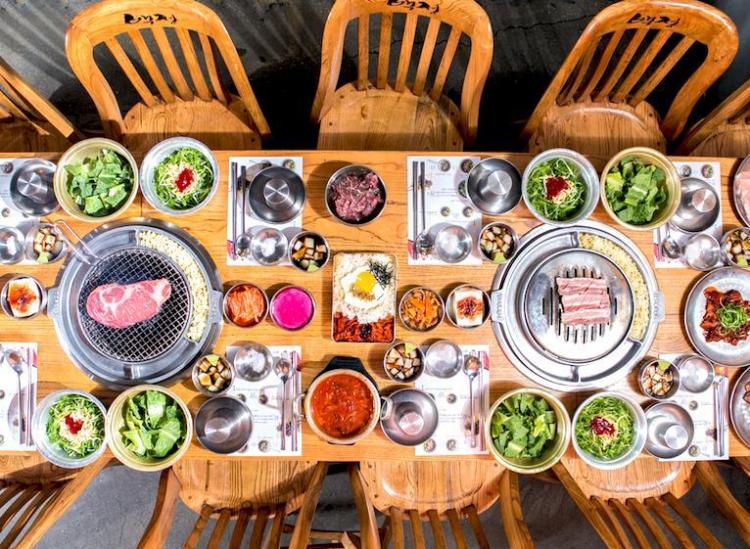
Kang Ho Dong Baekjeong
If you’re not already a Korean BBQ fan, there’s going to be a point when your friends, a date or someone in your family asks you if you want to go out for it. Your answer should always be yes, because it’s delish, and why the hell not? We’re here to give you the rundown on the basics of Korean BBQ, from the different kinds of meat to soups to the banchan. One thing to remember: Don’t wear something you love, unless you don’t mind smelling indefinitely like grilled meats from heat to toe.
First, Some Pointers:
- Korean BBQ is expensive, so go with a group.
- Be adventurous and try a little bit of everything.
- Use wooden chopsticks and keep them handy all night long.
- Cook your meat thoroughly until it’s golden brown.
- Make sure you ask for sesame oil.
- Remember the banchan is unlimited.
- Order rice and soju for the table.
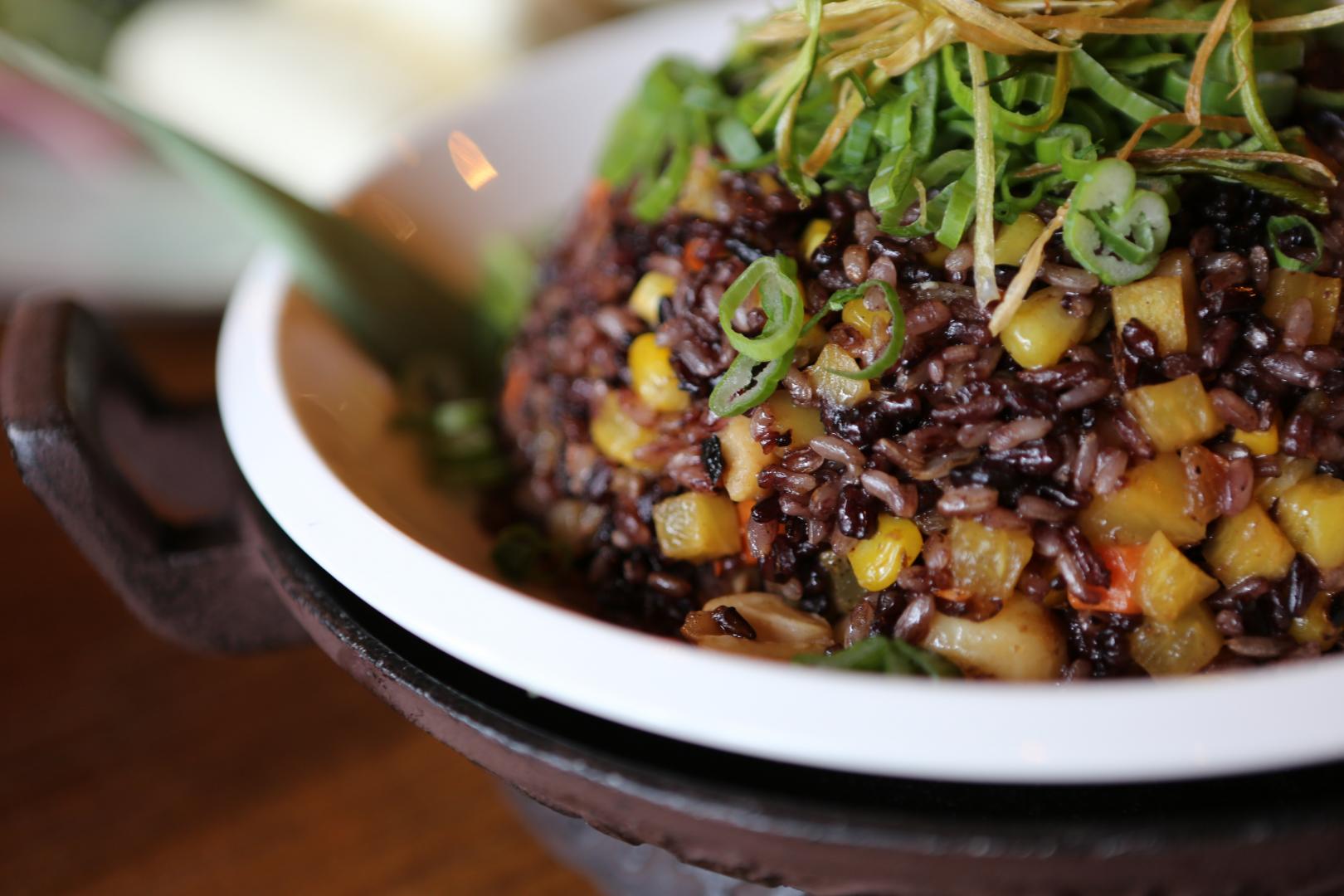
Unsplash
The Meats
The single most important thing to remember is that you’ll be grilling the meats right on your own table. It might seem slightly intimidating, but it’s really not. Just pretend like you’re at home in your own kitchen. The meat will come out on a variety of plates and you’ll have to place it on the grill and judge when everything is finished cooking. Once the various meats are golden brown on both sides, you know they’re cooked. Here are some common types of meat you’ll encounter.
Chadol Baegi: Also known as Korean BBQ brisket, this cut is thinly shaved beef brisket that doesn’t usually come marinated. It’ll cook pretty quickly and then you can dip it in sesame oil dipping sauce.
Bulgogi: One of the most common types of Korean BBQ meat is bulgogi, which is made of thin, marinated slices of beef or pork, usually in a soy sauce-based marinade. It’s often sirloin, rib eye or brisket.
Samgyupsal: Better known as pork belly, this cut of meat consists of fatty slices of pork belly meat. It’s not usually seasoned or marinated, but it’s popular to serve with ssamjang, which is a thick, spicy paste made with sesame oil, garlic, green onions and brown sugar.
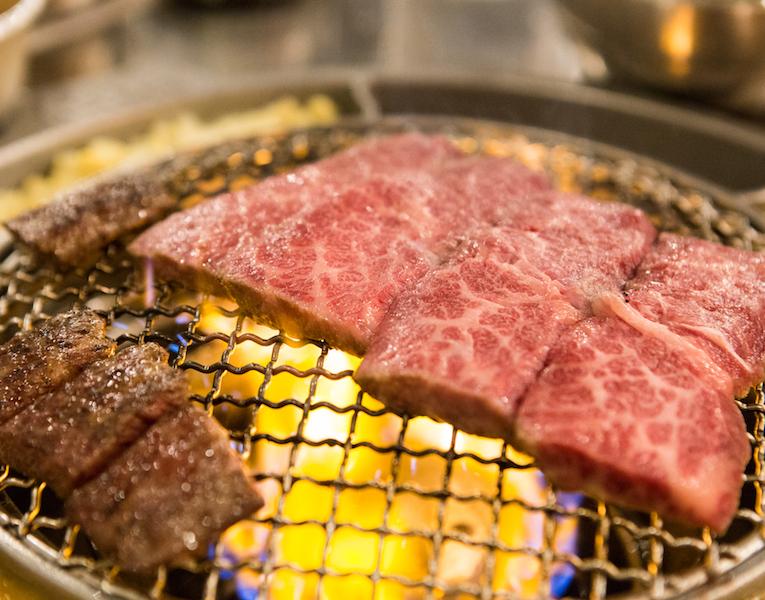
Kang Ho Dong Baekjeong
Dwaejibulgogi: This sweet and spicy marinated pork is coated with ginger and spicy gochujang sauce.
Galbi: Usually made with beef short ribs, galbi is marinated in a sweet and savory sauce made of soy sauce, garlic and sugar.
Dakgalbi: Chicken on the menu at a Korean BBQ place is usually heavily seasoned and marinated to compete with all of the other flavorful red meats. You won’t need any extra sauce to compensate.
The Sauces
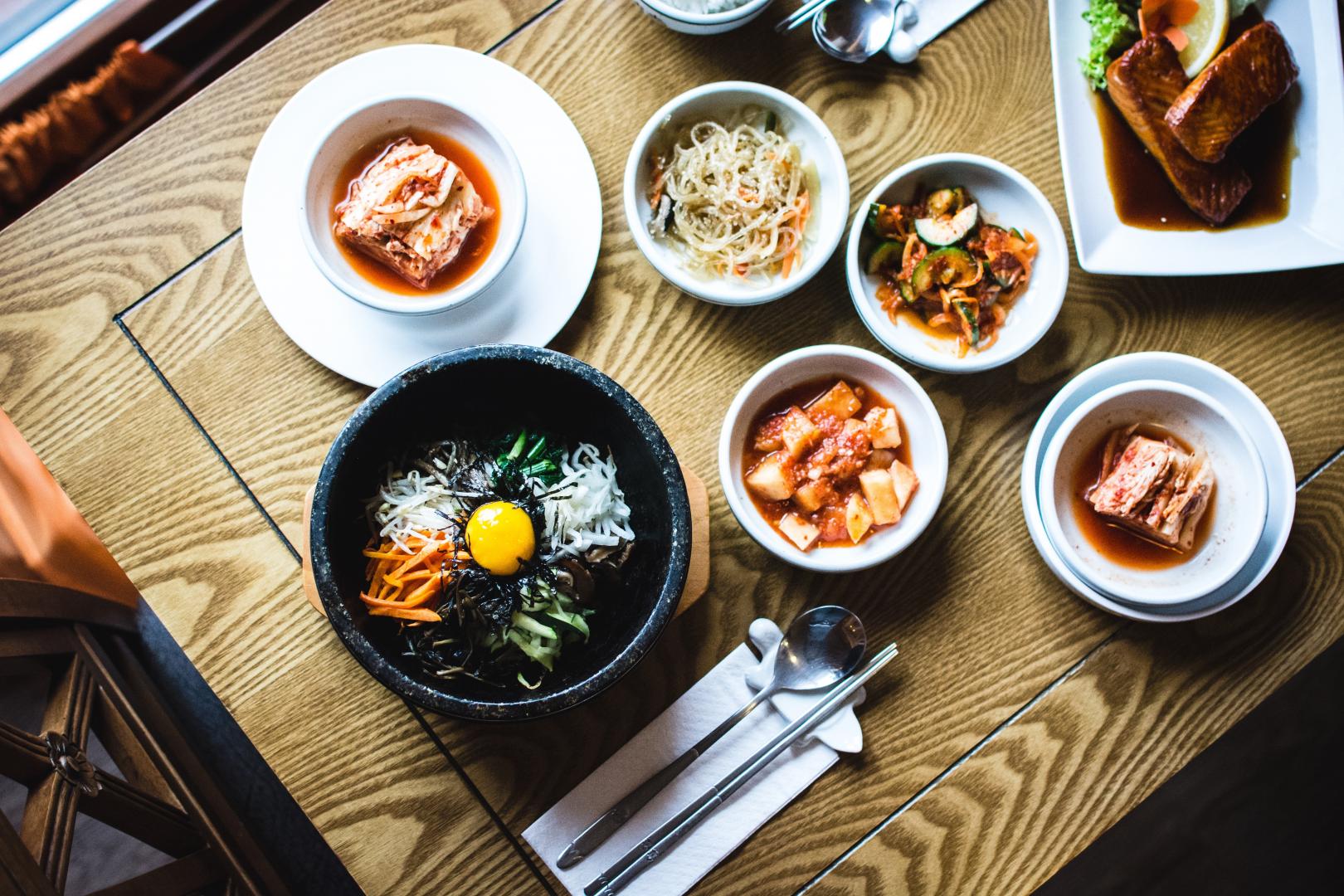
Unsplash
Ssamjang: This sweet and spicy paste is a mixture of gochujang and doenjang, which is a fermented bean paste. Use ssamjang as a spread for meat and greens.
Sesame Oil: One of the best dunking sauces for all of your meats is sesame oil with salt and freshly ground black pepper. Make sure you have enough of this dipping sauce to go around.
The Banchan
Banchan refers to the tiny complimentary dishes of food that are served alongside rice and all of your other dishes. At Korean BBQ restaurants, they’re usually unlimited. A lot of the dishes are pickled, fermented or heavily seasoned.
Kongnamul Muchim: Seasoned soybean sprouts with salt, garlic, green onion, red pepper flakes, fish sauce, sesame seeds and sesame oil.
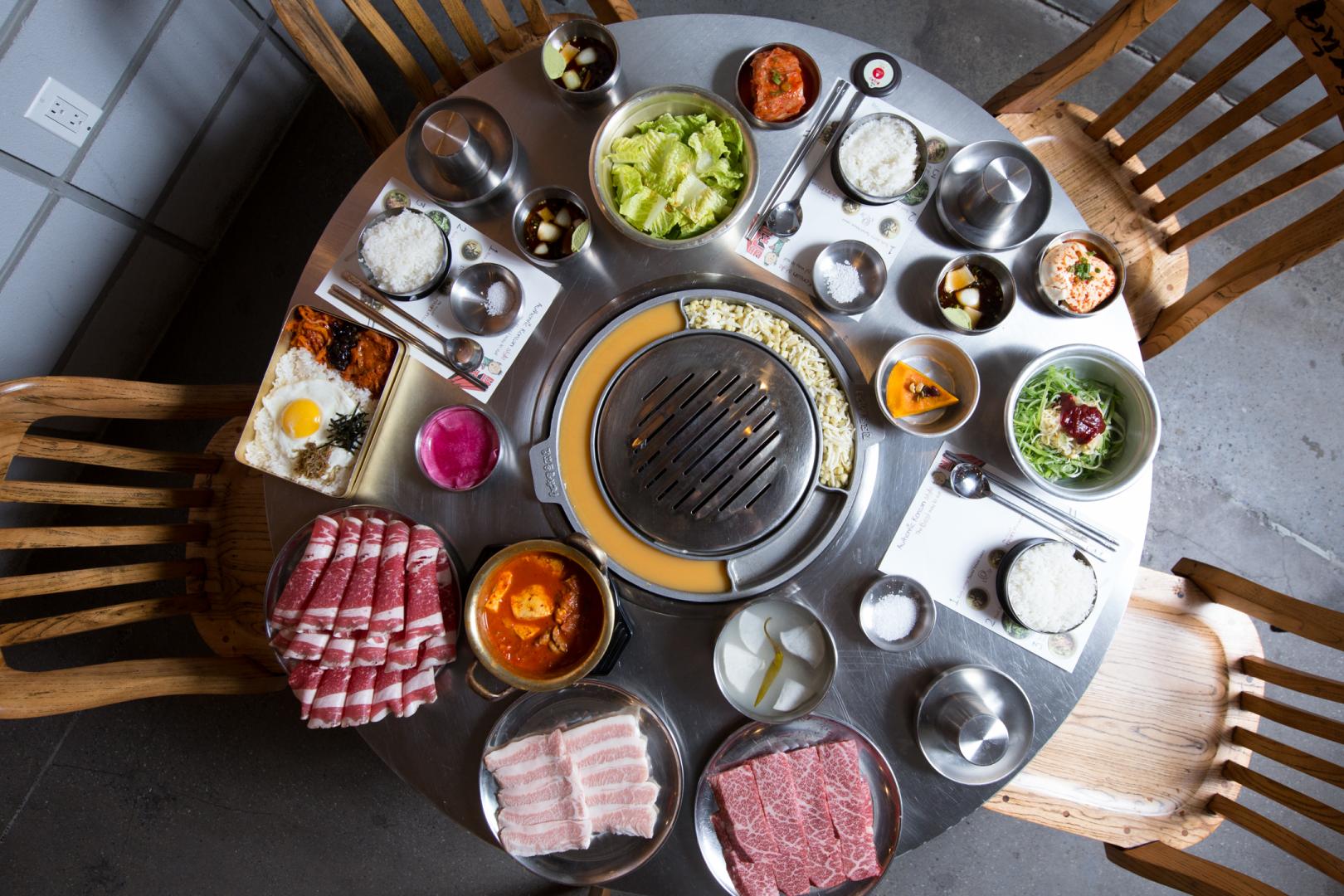
Kang Ho Dong Baekjeong
Oi Muchim: Spicy cucumber salad with salt, red pepper flakes, scallion, garlic, vinegar, sugar, sesame seeds and sesame oil.
Kkakdugi: Diced daikon radish kimchi with salt, sugar, fish sauce, red pepper flakes, green onions, garlic and ginger.
Eomuk Bokkeum: Spicy stir-fried fish cake with peppers and onions.
Baechu Kimchee: Cabbage kimchi made with salted, seasoned and fermented napa cabbages.
Danmuji: Pickled daikon radish flavored with rice vinegar, garlic, turmeric, bay leaves and peppercorns.
Miyeok Muchim: Seaweed salad with cucumber, radishes, sesame seeds, soy sauce, vinegar, honey, onion, garlic and salt.
Musaengchae: Sweet and sour radish salad made with red pepper flakes, garlic, fish sauce and sometimes sugar and vinegar.
Gamja Salad: Korean-style potato salad with hard-boiled eggs, mayo, ground white pepper, salt, honey and sometimes carrot or cucumber.
Sukju Namul: Seasoned mung bean sprouts with scallion, garlic, sesame oil, sesame seeds, salt and pepper
Soups And Stews
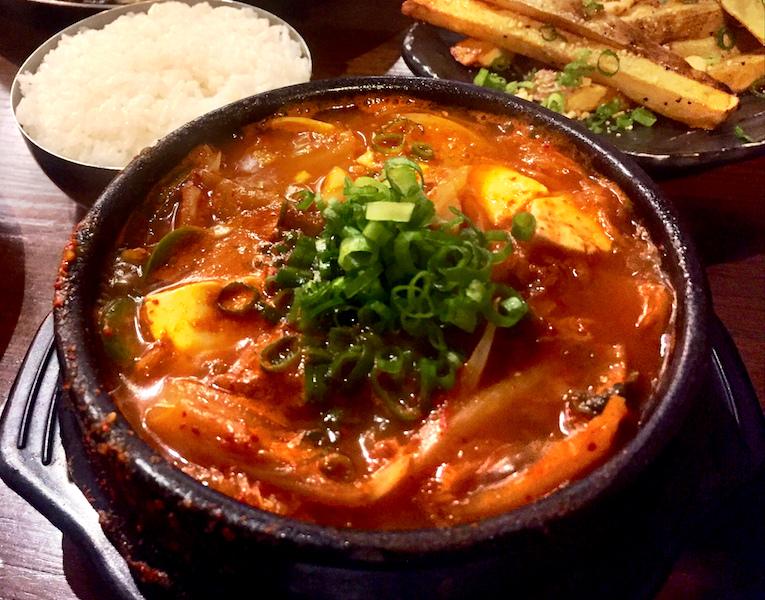
Flickr
If all of the meats and banchan aren’t enough for the table, you can also order some soups and stews to share.
Kimchi Jjigae: Kimchi stew, or kimchi jjigae, is made with ingredients like scallions, onions, diced tofu, pork and seafood. It’s usually seasoned with doenjang and gochujang. This beloved Korean staple is the best combination of hearty, spicy and savory.
Doenjang Jjigae: This soybean paste stew is rich and silky and made with vegetables like scallions, aehobak, radishes, potatoes, chili pepper, mushrooms, tofu, seafood, meat and some gochujang for a little extra heat.
Remember: Always keep your eye on the meat and order enough soju to get the whole table buzzed.











